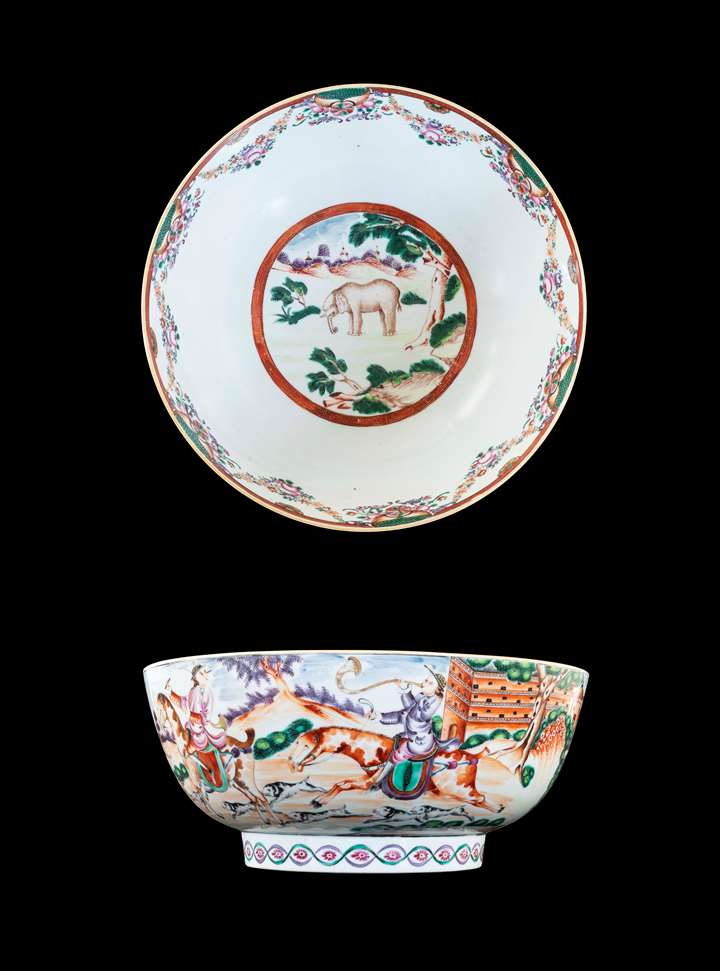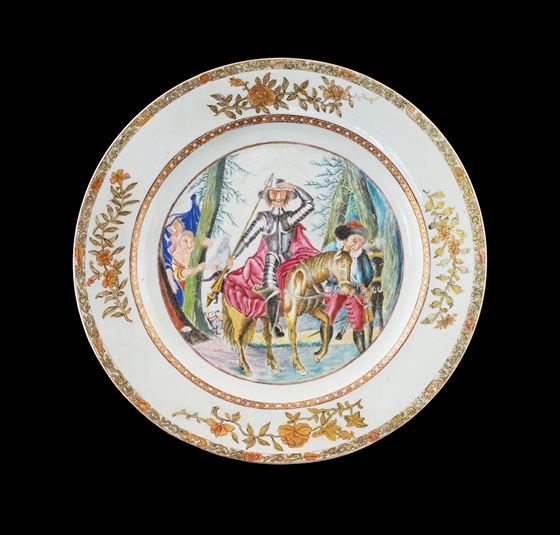Description & Technical information
English Market
A large Chinese export porcelain charger with a central scene depicting Don Quixote putting on a barber’s bowl as the Helmet of Mambrino, after an image by Charles-Antoine Coypel (1694-1752) originally for the Gobelins tapestry factory, the cavetto with gilt chain border, the rim with flowers, the outer rim with a border of scrolling lotus.
The images by Coypel were engraved by a number of artist including Louis Surugue, Gerard Vendergucht and Jacob Folkema. The Vandergucht series was used for an early English edition published circa 1732.
This dish is from the third and rarest service (C), ordered between 1755-70 and executed by the purple-foliage workshop. For further information see the article in The Magazine Antiques, January 2013, by Michael Cohen proposing several pieces of exceptional quality and distinctive enamelling made by this workshop, possibly all for the English market.
This pattern is one of the most sought after by collectors of European subjects on Chinese export porcelain. The traditional view is that there were two services, the first about 1745 just after the Folkema print was published and a second about 1750. There are significant differences between the two versions and the dating has always followed the idea that, as the earlier one is more detailed, with finer quality enamels, then it must be earlier and the later one has been reduced somewhat. However there is no direct evidence for this.
In fact a closer analysis of different examples of this pattern suggests three services and a different dating sequence. The first (A) would appear be a teaservice, painted as here in excellent quality and including the pony, Dapple to right of the figure of Sancho, but lacking the fleeing figure in the background (his blue horse remains) - though a teapot from this service illustrated in Willamson (1970) spreads out the composition and does include this figure. This dates to around 1745-50.
The second (B) is a service of table flatware, dinner plates and meatdishes, very close in date to the teaservice, the composition lacking Sancho’s pony or any fleeing figure and his horse. Pieces from this service have a border with four Meissen style cartouches containing grisaille landscapes and birds, a rim very similar to the Scotsmen plate (circa 1745).
The third (C), of dinner plates and chargers only, is the rarest and best quality. It includes all the elements of the original print and has very different enamels, thicker and in an unusual palette (look at the tones under the horse’s feet).
The border consists of gilt flowers and edging and the cavetto has a chain border. This last is very diagnostic as it is used to date pieces from about 1755 onwards, most commonly around 1760. In Howard’s two books on armorial porcelain the earliest with this border is 1755.
Although a decrease in quality with time is the usual story it does not always have to be that way. The borders suggest otherwise. It is possible that the Vandergucht or the Folkema print was sent to Canton to be copied onto a service, initially a teaservice. The success of this first order could have prompted another order of larger pieces. The image is complicated and the Chinese artists could easily have decided to simplify bits that did not make sense to them. Such a reduction in so famous a story would have been noticed immediately by the customer back home. So then a supercargo with a later order would have been careful to get it right and it might have been placed with a specialised enamelling workshop that was producing very fine European subject images. An example of this is seen in the small hunt bowl (Cohen & Cohen 2008, No35) which is of much better quality than earlier punchbowls using the same James Seymour image. And the colours in that bowl are also distinctive and similar to those in the third Quixote service (C).
So it is suggested that these three services should be considered in a new light: a teaservice circa 1745, a flatware service circa 1745-50 and the third as circa 1755-1770.
Examples of all three are offered here by Cohen & Cohen.
The scene shows the figure of Don Quixote on his horse Rosinante, he is placing a basin over his head, beside him is his faithful squire Sancho Panza with his pony Dapple and on the other side are two women behind a tree. In this episode Quixote has encountered a barber who is holding a basin over his head to shelter from the rain (the woman on the left appears to be sheltering herself with her cloak too). With his characteristic ability to conjure up heroic adventures out of the mundane, Quixote has assumed the basin to be the Helmet of Mambrino, a legendary possession of a Moorish King, made of pure gold and rendering the wearer invulnerable. It was the goal of many of the Knights of Charlemagne to find it, not dissimilar to King Arthur’s Knights searching for the Holy Grail. Quixote commands the astonished barber to give him the helmet and, thinking he is mad, the barber drops it and flees. The story is popular and emblematic of all that Quixote represents. Don Quixote is a hero for any age but especially for ours. He has a huge imagination nurtured by reading many books and his innocence and excitement at the prospect of adventure appears as madness to the grey people around him. He is the awkward and airy creative force that is anathema to the bean-counter mentality of our modern age. He has his own code: an ancient one of morality and honour, the code of Chivalry, and he sets out bravely to rectify the wrongs he encounters - and inevitably falls foul of the tick-box mentality of those who see the world only in straight lines and spreadsheets. Book One of the novel by Miguel de Cervantes (1547-1616) was published in 1605, written in prison to pay off his debts. Cervantes had a colourful life: as a young man he was servant to a Spanish Cardinal in Rome, then he enlisted with the Spanish Militia and was wounded in the Battle of Lepanto against the Turks. He went to sea and spent five years as a slave, captured by Barbary pirates. He was ransomed by his family and returned to Madrid where he had children by two women, was a Commissary for the Armada in 1587 and then became a Tax-collector in Seville, where he ran out money. After the success of the first book he wrote a sequel in which, rather than being beaten up at every turn, Quixote and Sancho are greeted as heroes and friends everywhere by those who have read the first book. Up to the middle of the 20th Century it was, after the Bible, the most printed book. Cervantes never matched it and died penniless on 23 April 1616 (the same date as Shakespeare).
References: Howard & Ayers 1978, p345, No 342, a dinner plate service B; Lloyd Hyde 1964, plate XV, p15, service C; Buerdeley 1962, Cat 33, service C; Williamson 1970, pl XXIV, a teapot, service A; Cohen & Cohen 2013, p72, No 49, a meatdish from service B.
Date: 1755-70
Period: 18th century, Qianlong period
Origin: China
Medium: porcelain
Dimensions: 38 cm (15 inches)

Discover the gallery
Cohen & Cohen
Chinese Export Porcelain, 17th & 18th Century, Works of Art
More Works From This Gallery
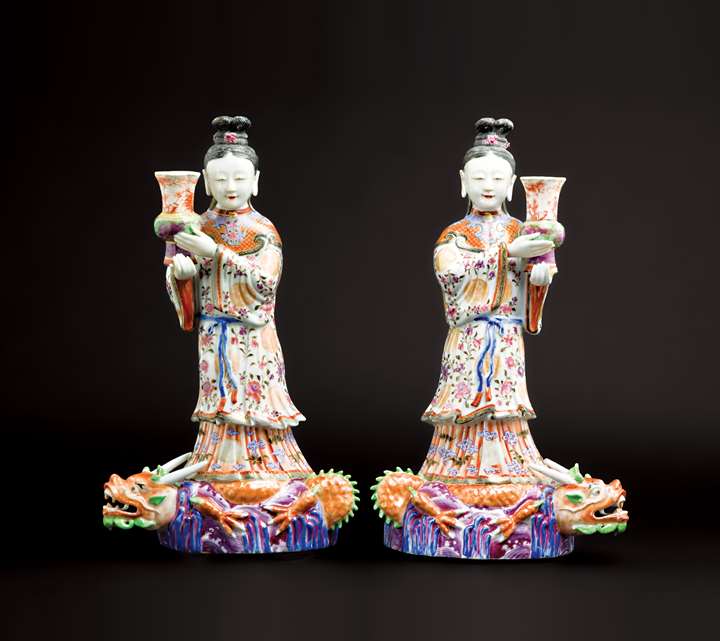
Cohen & Cohen
Pair of Chinese export porcelain wall mounting candlesticks modelled as maidens
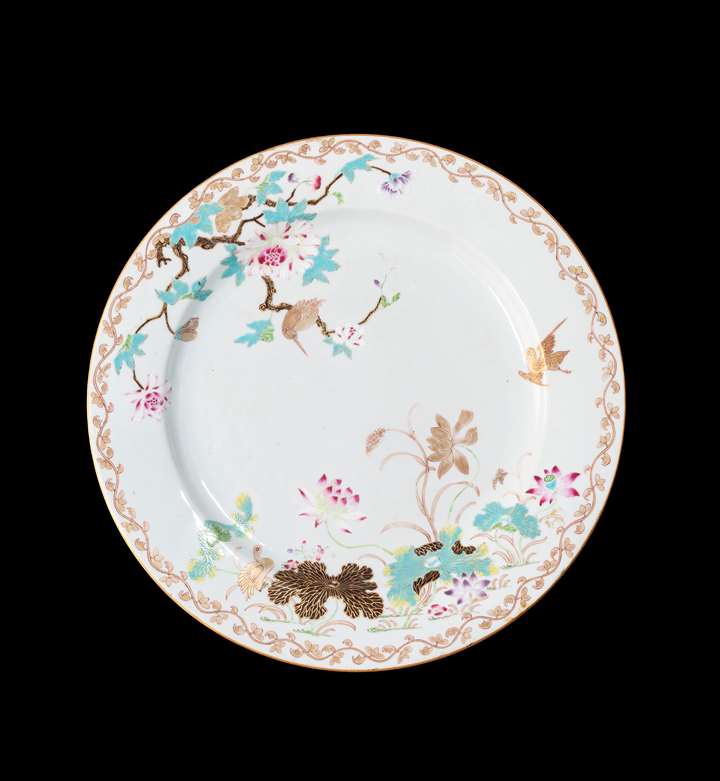
Cohen & Cohen
Chinese export porcelain famille rose Charger
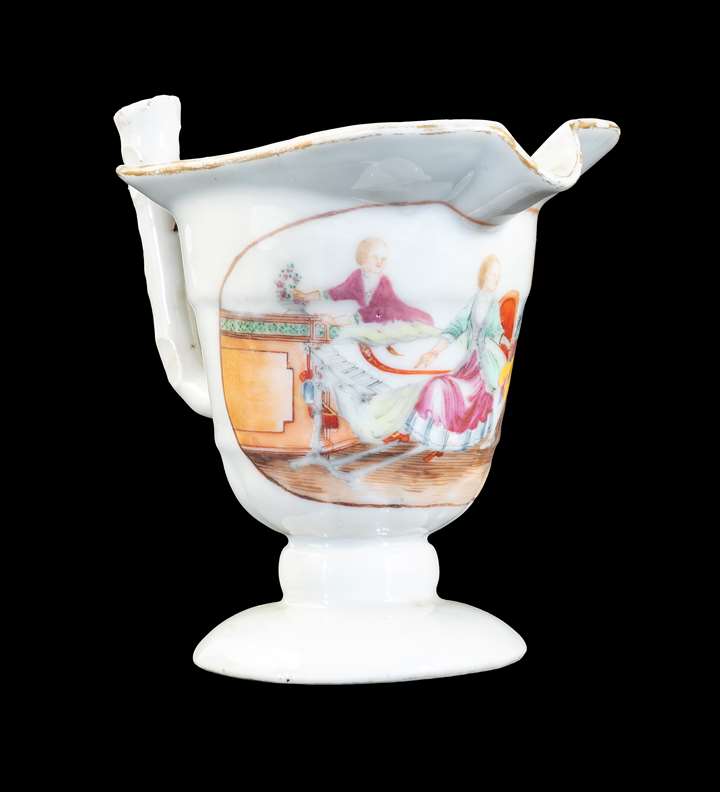
Cohen & Cohen
Chinese export porcelain Milk Jug with European Subject
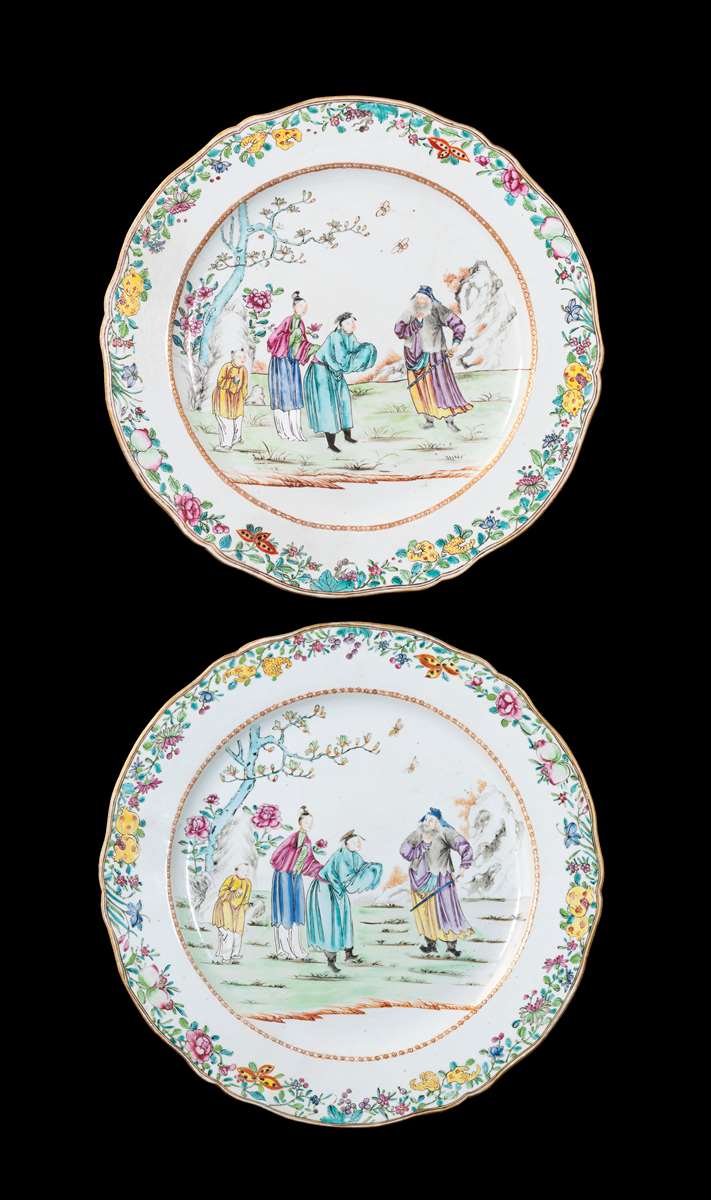
Cohen & Cohen
Pair of Chinese export porcelain famille rose chargers
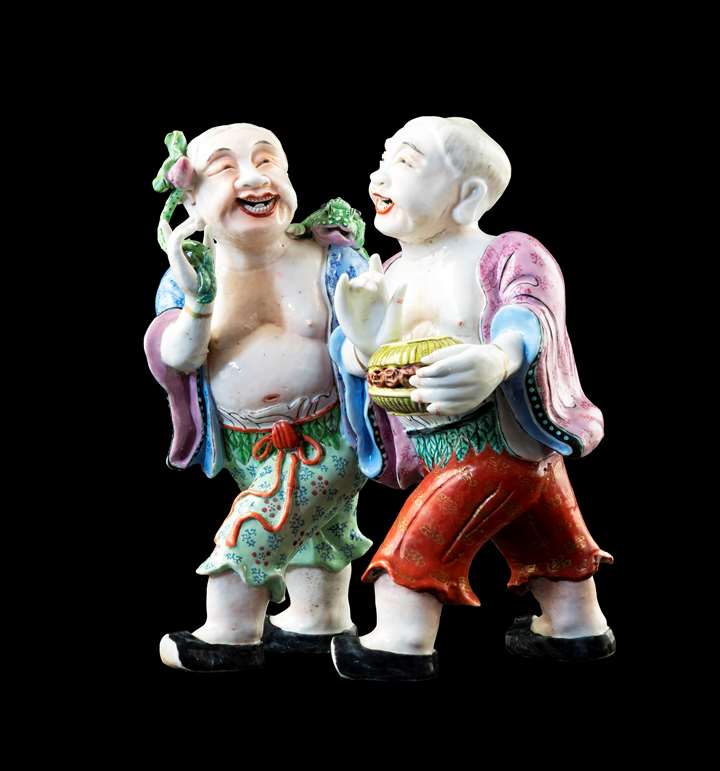
Cohen & Cohen
